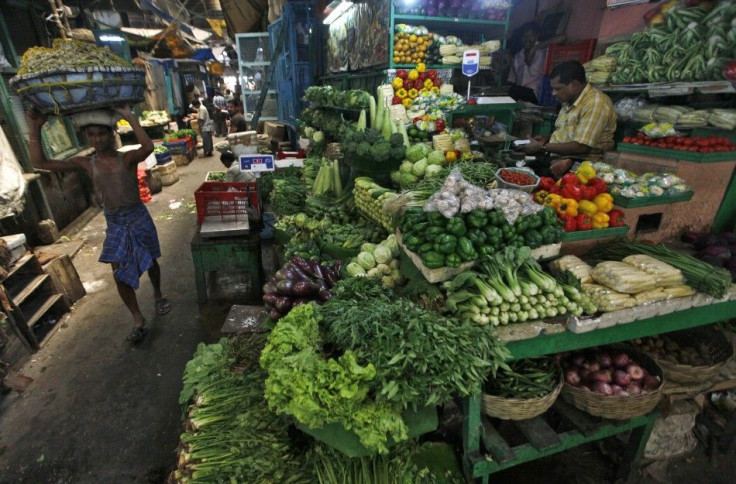India's Inflation Rose More Than Expected In April

India's inflation accelerated in April to 7.23 percent, higher than expected and amid sluggish growth, as food and manufacturing costs jumped.
The latest Commerce Ministry inflation report, released Monday, sent the rupee against the dollar to a record closing high of 53.97, just under the 54 level that spurs investors to act on their positions. The rupee's eroding value has also contributed to a rise in the dollar-denominated cost of fuel.
The news also sent the Sensex stock index down Monday by as much as 1 percent. The market settled down 0.47 percent to 16,215.84 at closing.
Analysts polled by Reuters expected a 6.7 percent rise from a year ago. April's preliminary inflation figure is also up from the previous month when inflation grew by 6.89 percent. Inflation averaged 9.52 percent in the past two fiscal years, according to the Times of India.
Persistent drought conditions and high temperatures have been a main contributor to the rise in food prices. Food inflation has remained between 8 and 9 percent and will likely remain that way for the near term, making efforts to bring the total inflation rate to the government's ideal level difficult without tackling price rises in manufactured goods.
It's unlikely that headline inflation will drop to 4 to 5 percent unless there is a severe fall in manufactured goods prices, HDFC economist Jyotinder Kaur told the Times of India.
Although the rate of growth has declined, inflation is still much higher than the five-percent maximum the Reserve Bank of India considers comfortable. In April, the bank cut its benchmark interest rate -- from 8.5 percent to 8 percent -- for the first time since 2009.
External factors, such as the euro zone debt crisis and general malaise in global economic growth, have also played a role in India's slowdown. In December, the economy hit its lowest GDP growth in nearly three years, to 6.1 percent.
© Copyright IBTimes 2024. All rights reserved.





















